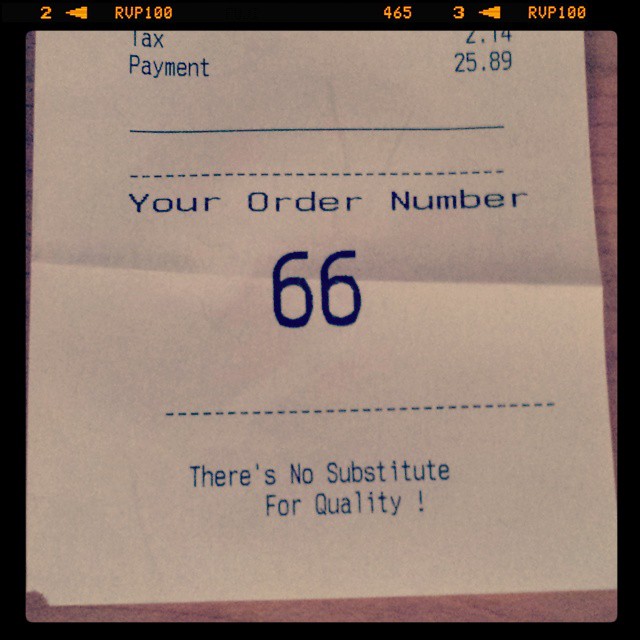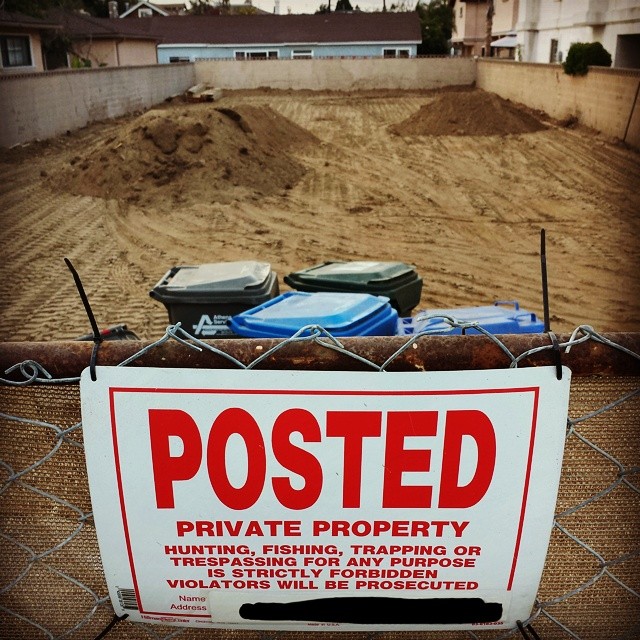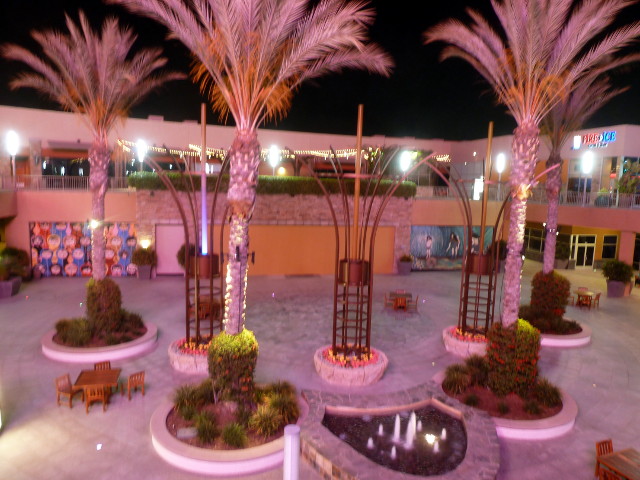
Appropriately, the kiddo was wearing his Darth Vader shirt.

Appropriately, the kiddo was wearing his Darth Vader shirt.

I really don’t think they need to worry about anyone hunting, fishing or trapping here.
There are squirrels in the neighborhood, but I don’t think this would be the best spot to trap them.
Having been a teenage geek in the 1990s, the phrase “AD&D coverage” always makes me think of Advanced Dungeons & Dragons, not Accidental Death & Dismemberment. Though depending on your DM and how the dice are rolling that day, there might be some overlap.

The office building where I work shares a parking garage with two other office buildings, two hotels, and an airport parking service. It can get crowded, and the spaces are so narrow and tightly packed that it’s a safe bet any given row will have two or three “open” spaces that won’t actually fit anything but a Smart car or a motorcycle, because the cars on either side are just a little bit too close to each other.
Or sometimes they’re parked at an angle into the next space, or flat-out taking up two spaces. That’s when I wish I could call them out by, I don’t know, slapping a sticker on the car that says “I’m an asshole who doesn’t know how to park.” Or starting youcantpark.tumblr.com — oh wait, someone’s done that.
It’s infuriating, especially on days like this past Friday, when I drove up and down the entire structure for half an hour looking for a spot. It took so long that my Prius shut off the electric motor due to low battery…and then turned it back on later, because all the driving on the gas motor had charged it up again.
I finally stopped at the end of a row, when two men got into a van in the last space and turned on the engine. Next to it was one of those technically-open-but-not-really spots. Behind me was another car whose driver had been following me down from the top floor, checking and discarding the same too-narrow spaces along the way. We sat there, waiting, while they sat with the engine on and the doors closed. Eventually I put my car in park, went back to talk to the guy waiting behind me, went up to talk to the guys who insisted they just needed a few more minutes before they could leave (really? they couldn’t back out, let two cars park, and find a place by the side of the aisle to let other cars by?), and just as I was about to pull over to the side so he could go around, they started backing out. I pulled into the second spot, leaving the last one clear for the car behind me.
FINALLY!
But why had it been necessary? I had passed probably 30 spaces that I could have parked in, if only the people who’d parked on either side had put in a little more effort. Obviously, people are jerks, right? They chose to park badly…but they didn’t make that choices in a vacuum.
Sure, people have made a lot of individual choices to park in ways that make spaces unusable…but this isn’t a problem in most parking lots. The design of the garage encourages people to park badly. I suspect that re-striping this lot to have fewer spaces per row would actually allow more cars to park here. Maybe splitting up the width of one space along the entire aisle would be enough to lessen the impact of small errors — and frustration — that often leaves them with two or three useless spaces each. That’s a net gain of one or two cars per aisle, which doesn’t sound like much, but at 2 sides × 8 lanes × 7 floors, that’s an extra hundred or so cars that could fit, with less frustration on the part of the drivers. That sounds like a win to me.
It’s clear that many people online don’t understand the concept of dosage or concentration when it comes to substances of any sort (food, drugs, additives, environmental factors, chemicals*, radioactive isotopes): Something can be harmless or even beneficial in small amounts, but dangerous in large amounts.
Trivial examples:
Think of it like turning the steering wheel on your car (or the handlebars on your bike, if you prefer):
Also, most things will have multiple effects, some positive and some negative. (Consider aspirin: pain relief, fever reducer, blood thinner, but high doses can cause ulcers.) The balance of how strong each effect is will change with dosage, so you might have a strong positive and mild negative at one dosage, and a mild positive and strong negative effect at a higher one, and at an even higher dose even the positive effects would become negative as described above.
So the next time you see a warning about how hazardous something is in high concentrations…think about whether that has anything to do with the level at which people are actually exposed to it in the typical case.
*Remember: Everything is made of chemicals, including raw organically grown food.
During Wondercon I discovered that Anaheim Garden Walk is even emptier than I remembered it. This used to be the third-floor food court. There’s nothing there anymore.
The outdoor mall had the misfortune to open just before the recession hit, too close to Disneyland to attract locals and too far to attract tourists. It never completely filled in, and as old stores leave, new ones don’t seem to be taking their places. I’ve only been there a few times, mainly when I happen to be in the area for something else (like a convention) and it’s been odd and kind of sad to watch it slowly empty out.
It’s not completely abandoned like, say, the Hawthorne Mall. From the street, you’d never know there was a problem. The front is packed with chain restaurants like California Pizza Kitchen, P.F. Chang’s and Bubba Gump Shrimp, all of which seem to be doing well, or at least they were busy during Wondercon. Behind them, the main floor of the mall only has a handful of stores. There are a few clothing stores and a tourist welcome center. Almost every storefront is walled off.
Here’s a shot from 2010. Note that there’s only one open restaurant in the photo. It’s not there anymore.
The top floor is just eerie, especially at night. When I grabbed lunch during Wizard World’s 2010 Anaheim Comic Con, they had several mid-range restaurants and a half-full food court. That’s all gone. There’s one bar and grill, which seemed to be doing well enough during the convention, but you really have to know it’s there. And then there’s a Johnny Rockets waaaaay at the back, which I imagine is only hanging on by being next to the movie theater. Otherwise, no one would go back there.
What makes it especially eerie is that the place is so well-maintained. It’s clean, well-lit, even decoratively lit. The walls are the same temporary walls put up when any other mall has an empty storefront or two, they’re just everywhere. It reminds me a little of the southernmost part of Irvine Spectrum when that section first opened, before many stores moved in…except that was part of a larger mall that was actually occupied.
It looks a LOT like the outdoor parts of the Del Amo mall…but if you stand up on the walkway outside the theater and look down, instead of a bustling courtyard with people milling around the fountain and walking in and out of stores, you’ll see an empty courtyard with flat walls.

On the plus side, they did build a parking structure big enough for a full mall, which means that it’s available for event parking. Of course, even the parking structure is unfinished. I took this photo four years ago, and the top floor still looks like this — chain link, sandbags, exposed rebar and all.